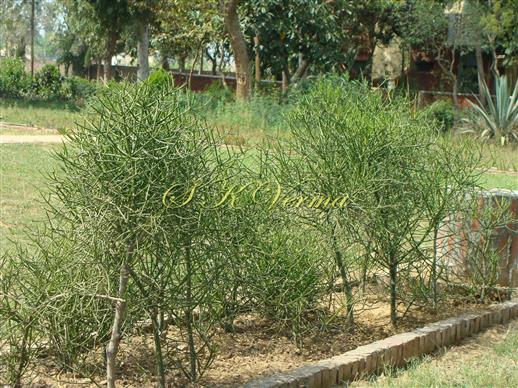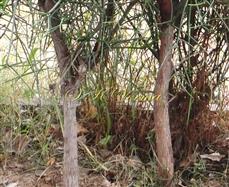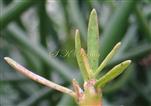Euphorbia tirucalli
Euphorbia tirucalli
L., Sp. Pl. 1. 452. 1753; Boiss. in DC., Prodr. 15(2): 96. 1862; Hook. f., Fl. Brit. Ind. 5: 254. 1890; Parker, For. Fl. Punj. ed. 2: 446. 1918 (Reprint 1973); Radcliffe- Smith, Fl. Pak @ eFloras.org p. 121; Smith, Fl. Tropical East Africa. 1987; Carter & Leach, Fl. Zimbesiaca 9: 5. 2001.
An open crowned, succulent branched, unarmed, +/- glabrous shrub or small tree, 2-3 m tall, bark brown, cracked; wood moderately hard, strong. Branching whorled; branchlets spreading, terete, ca. 7 mm thick, longitudinally finely whitish-striate and slightly grooved when fresh. Leaves only at tips of young leafy branchlets, sparsely tomentose with curled brown hairs, soon glabrescent. Leaves alternate, sessile or subsessile, strongly deflexed; leaf blades linear-oblong or oblanceolate, 7-15 mm x 0.7-2 mm, obtuse at apex, narrowed to base, margin entire, thick, fleshy, subglabrous or glabrous. Stipules minute, discoid, glandular, dark purple or blackish.
Cymes 2-6, densely crowded at the forks and tips of branches, each cyme forking 2-4 times producing a dense cluster of cyathias developing only male flowers or occasionally a few female flowers; cyathophylls scarious. (Cyathia not observed)
Common Names: African Milk bush, Milk Hedge, Pencil Tree, Finger Euphorbia, Naked Lady


.jpg)




.jpg)
